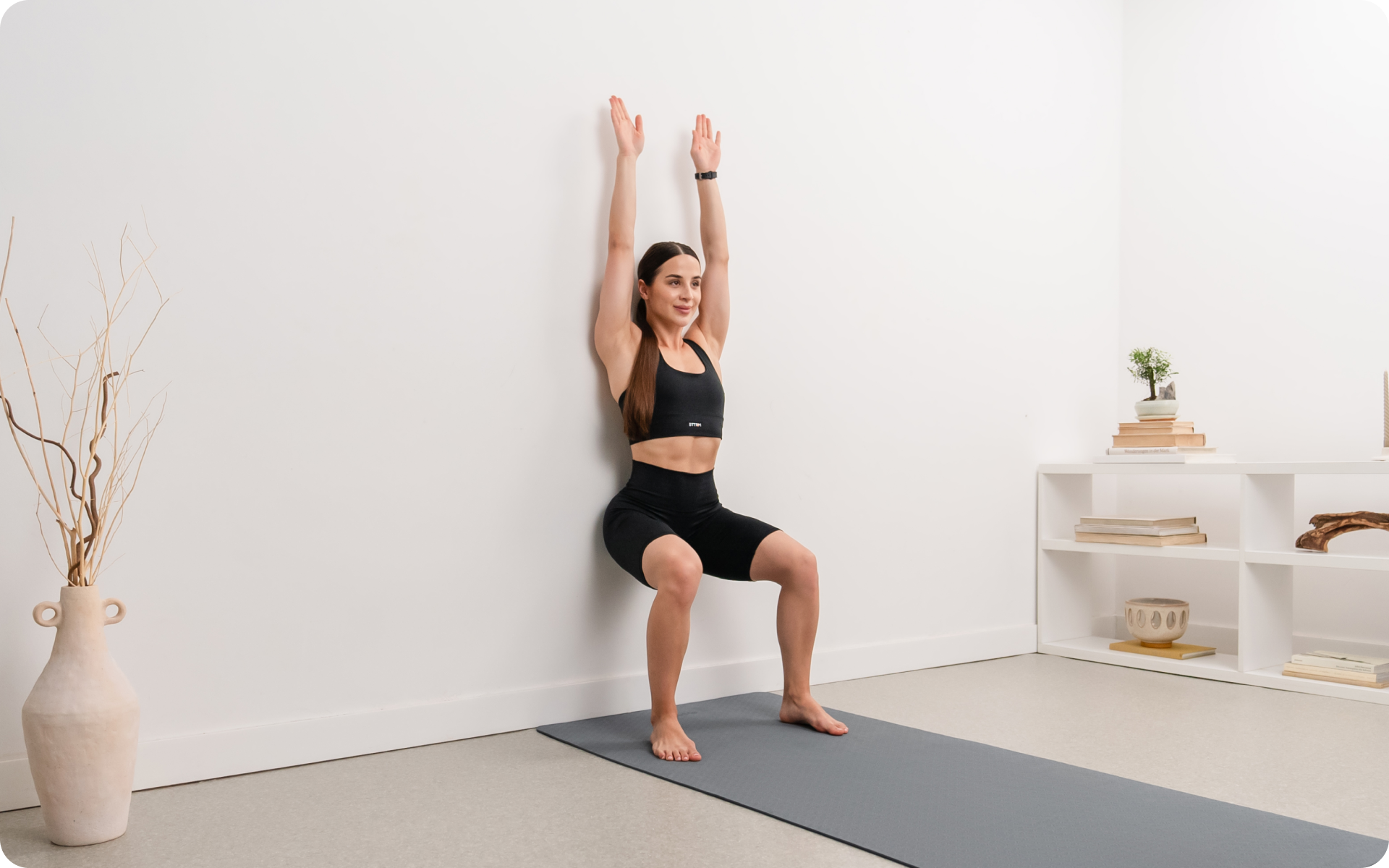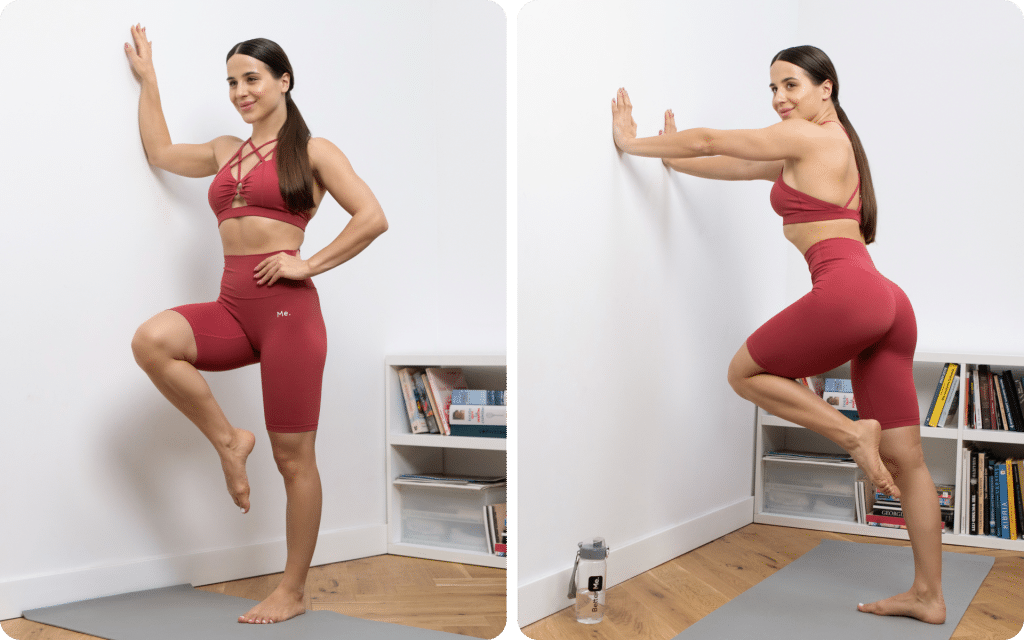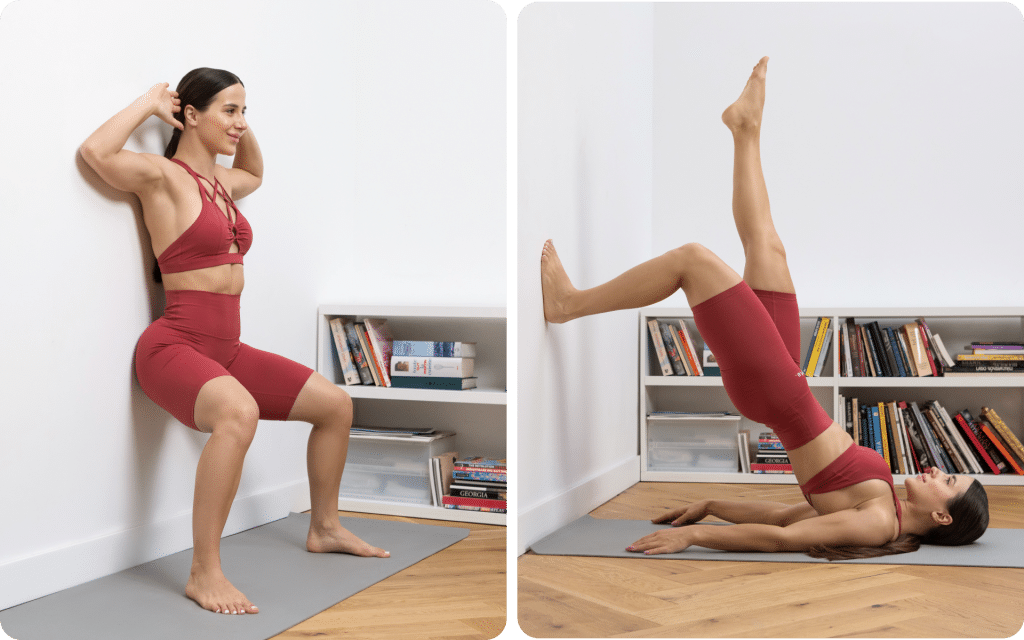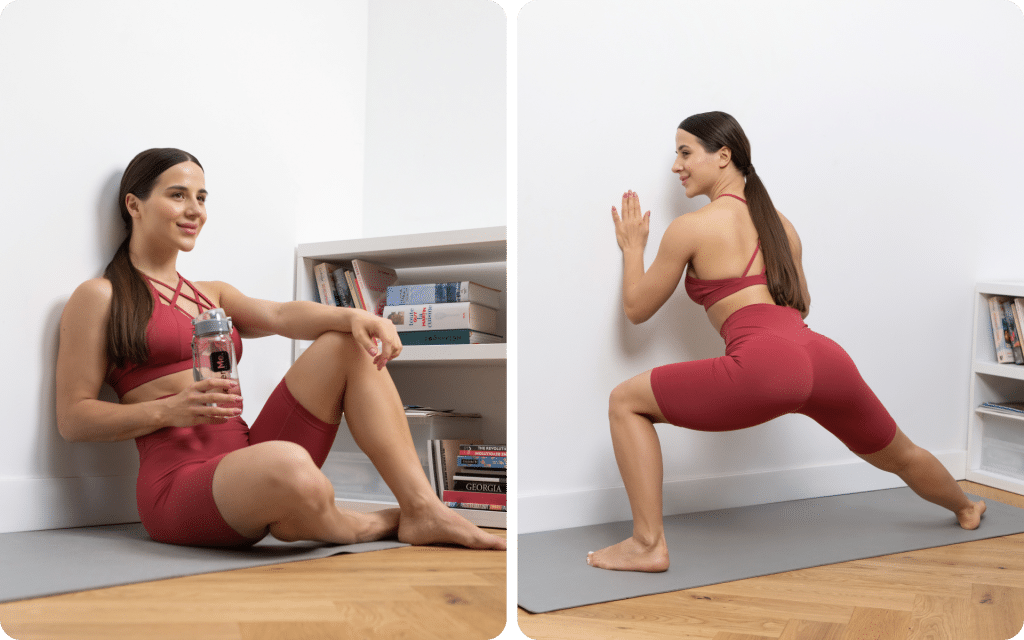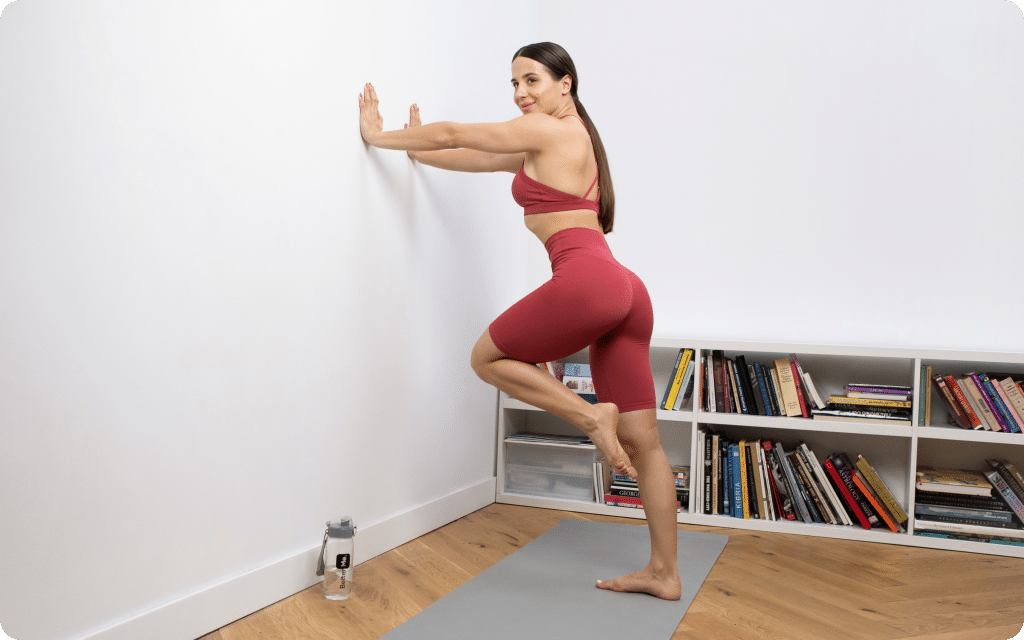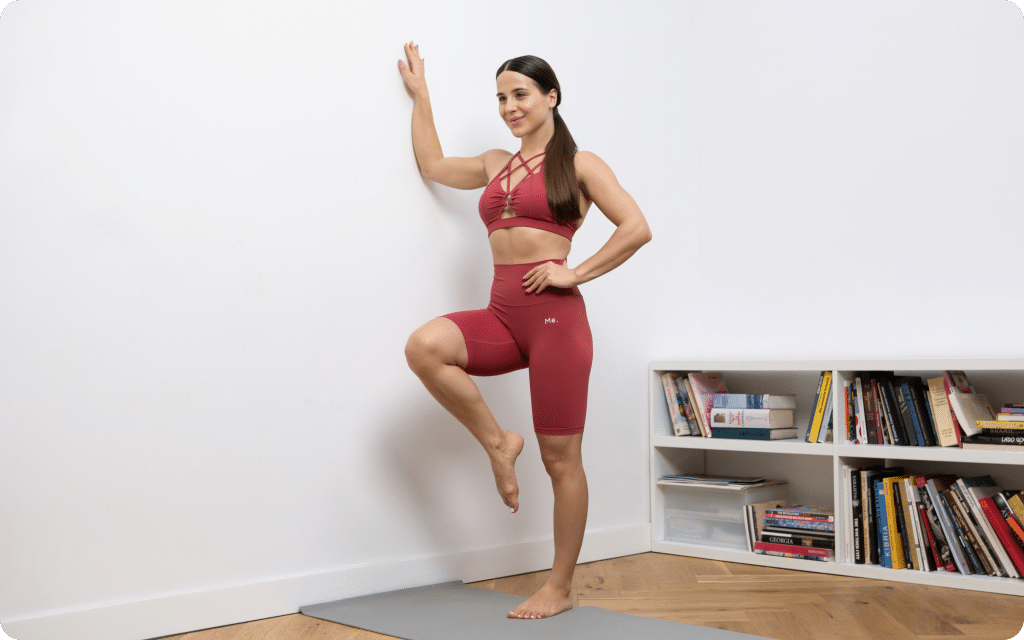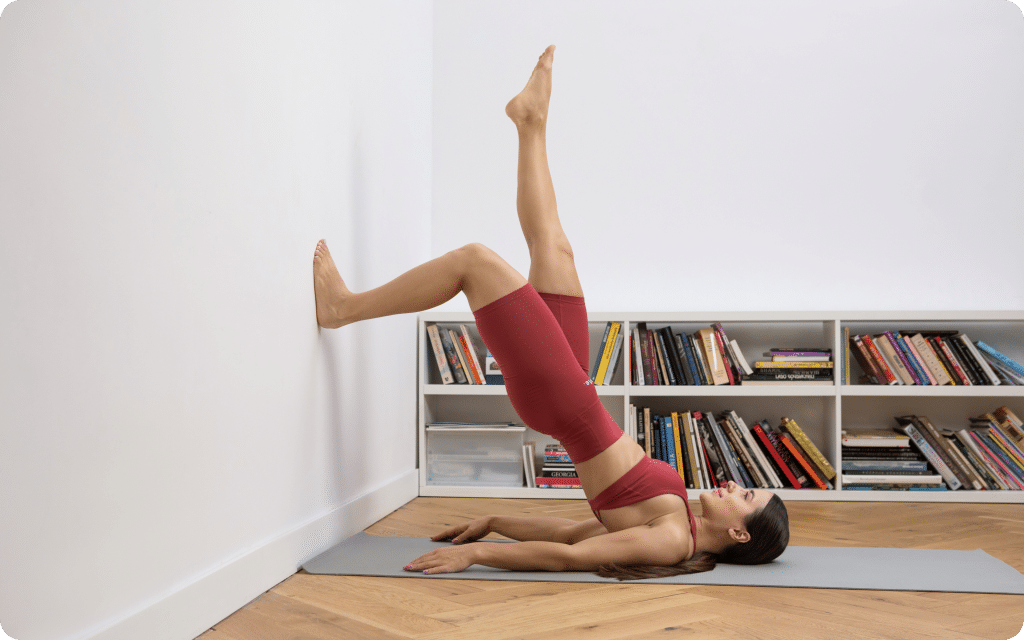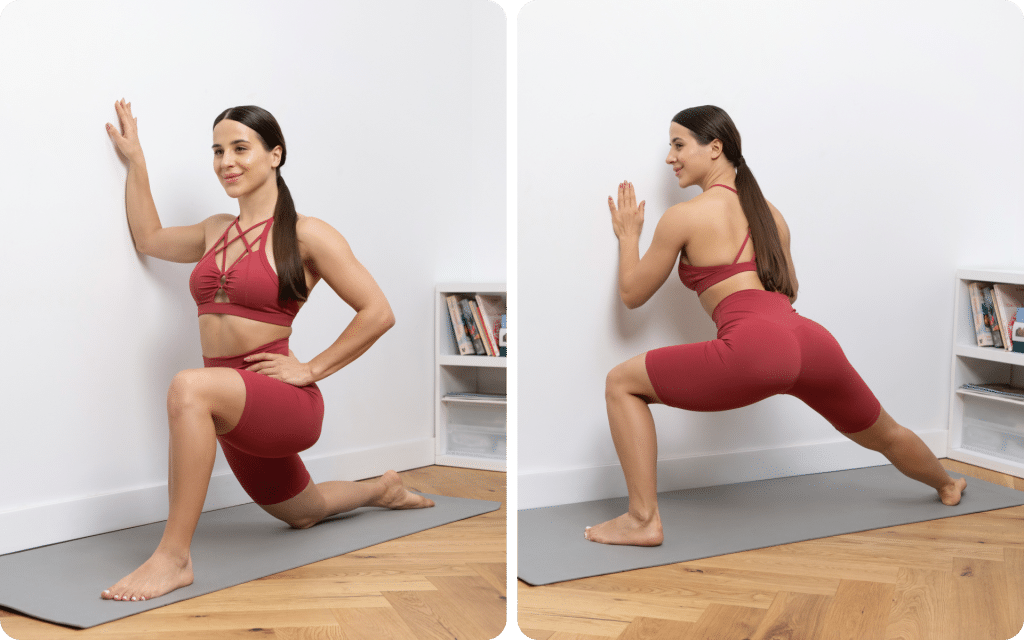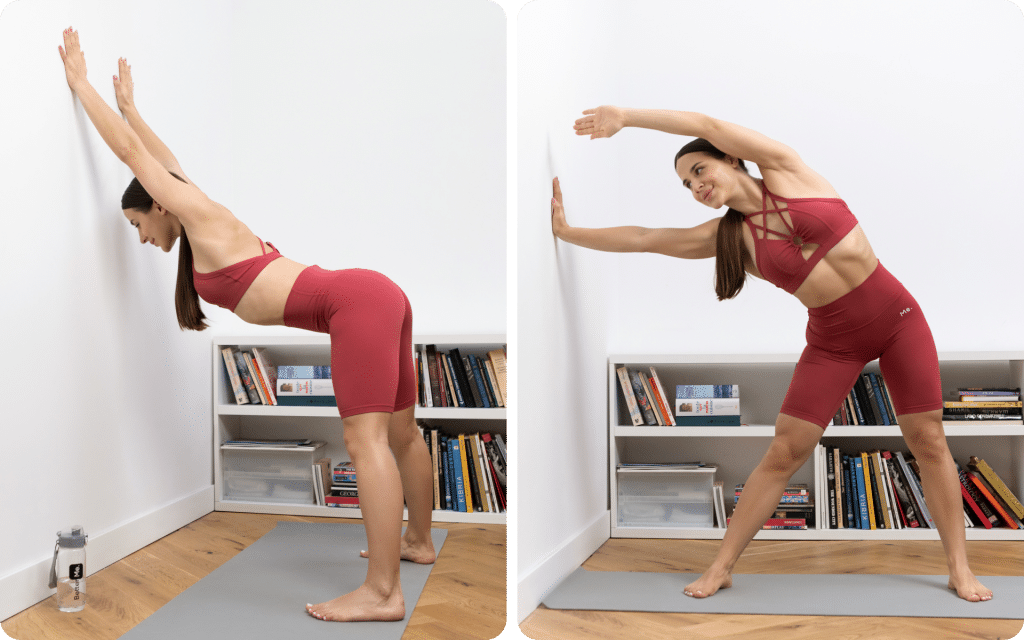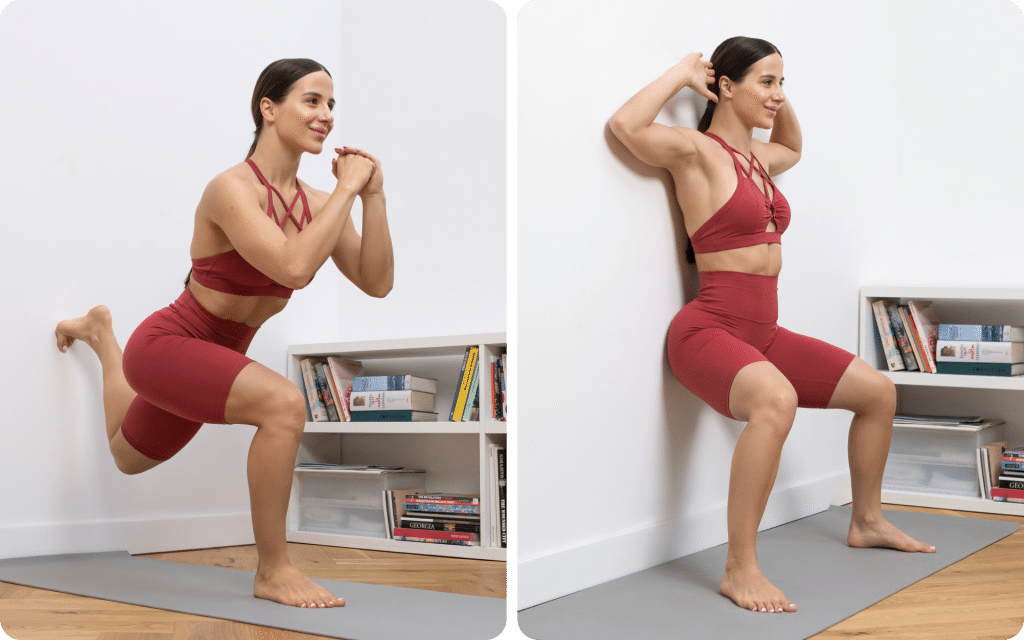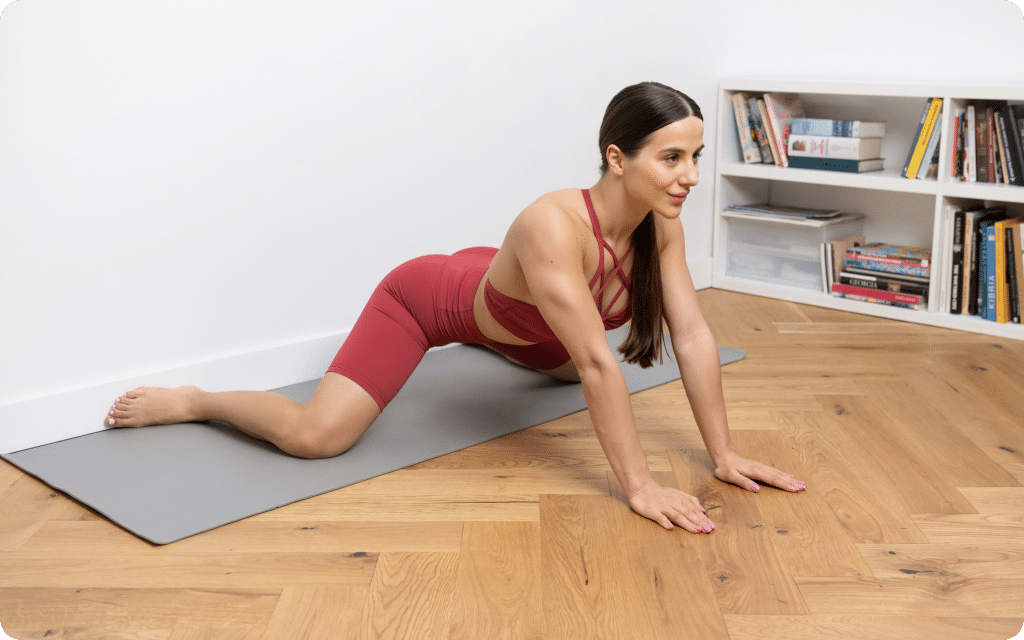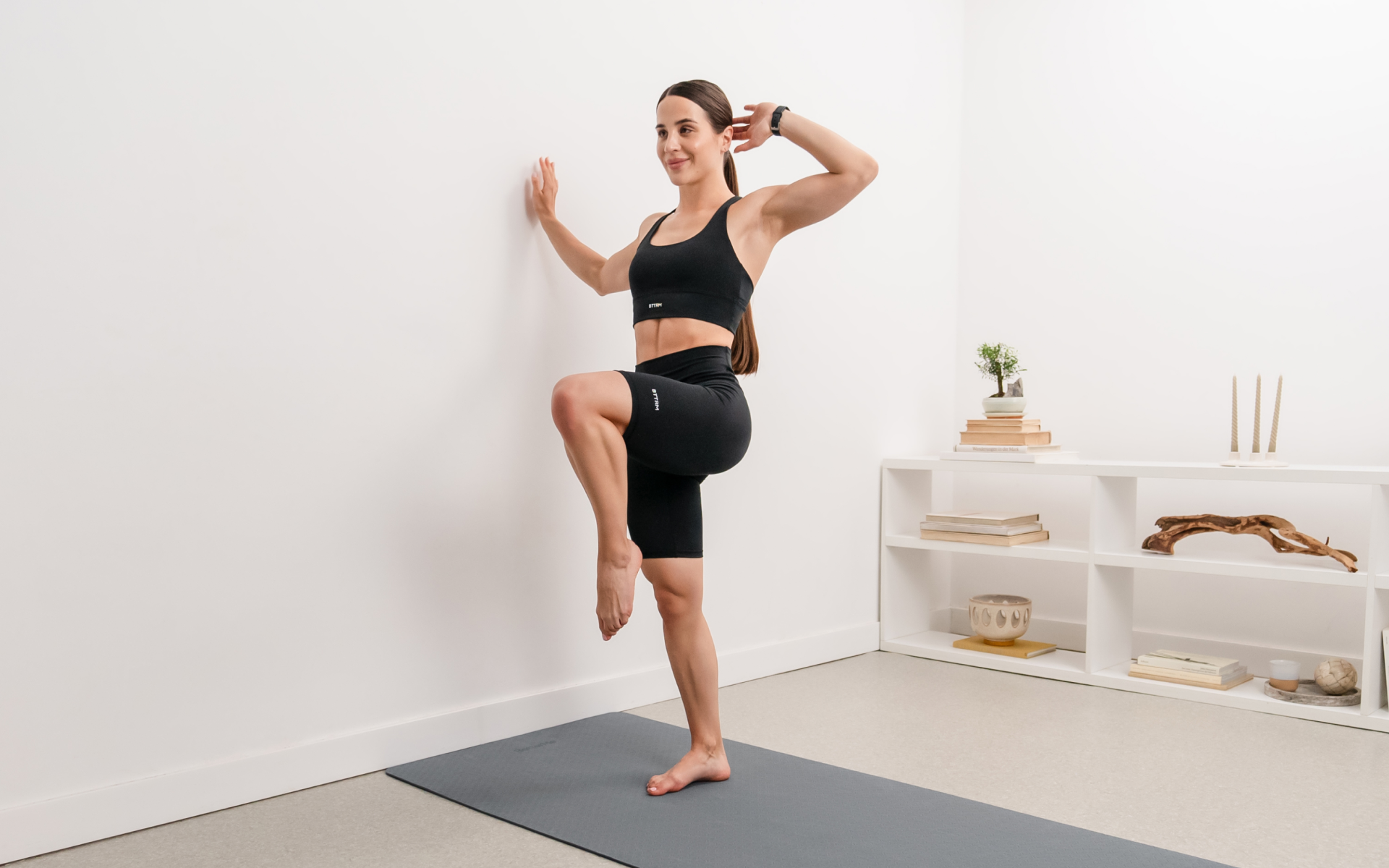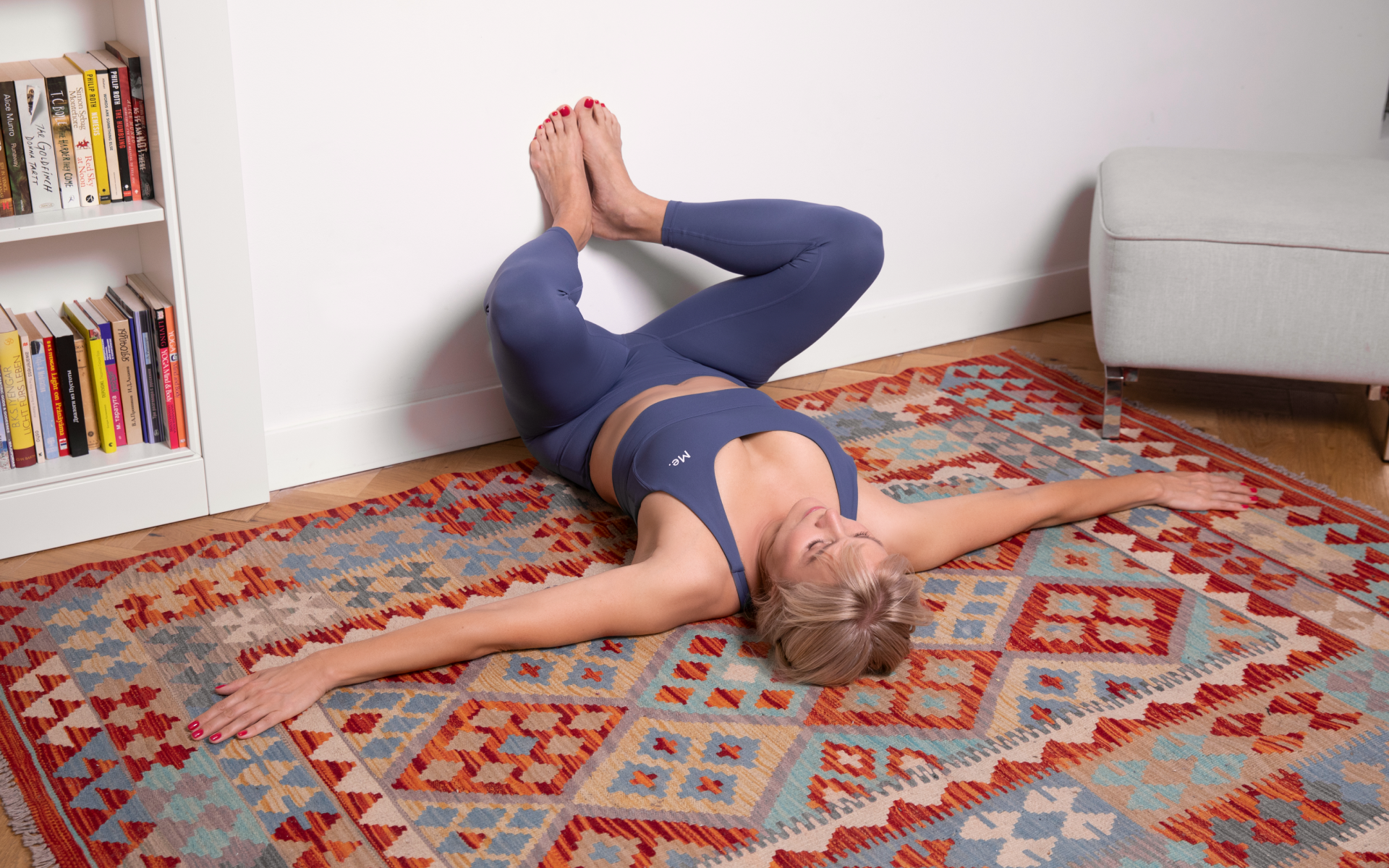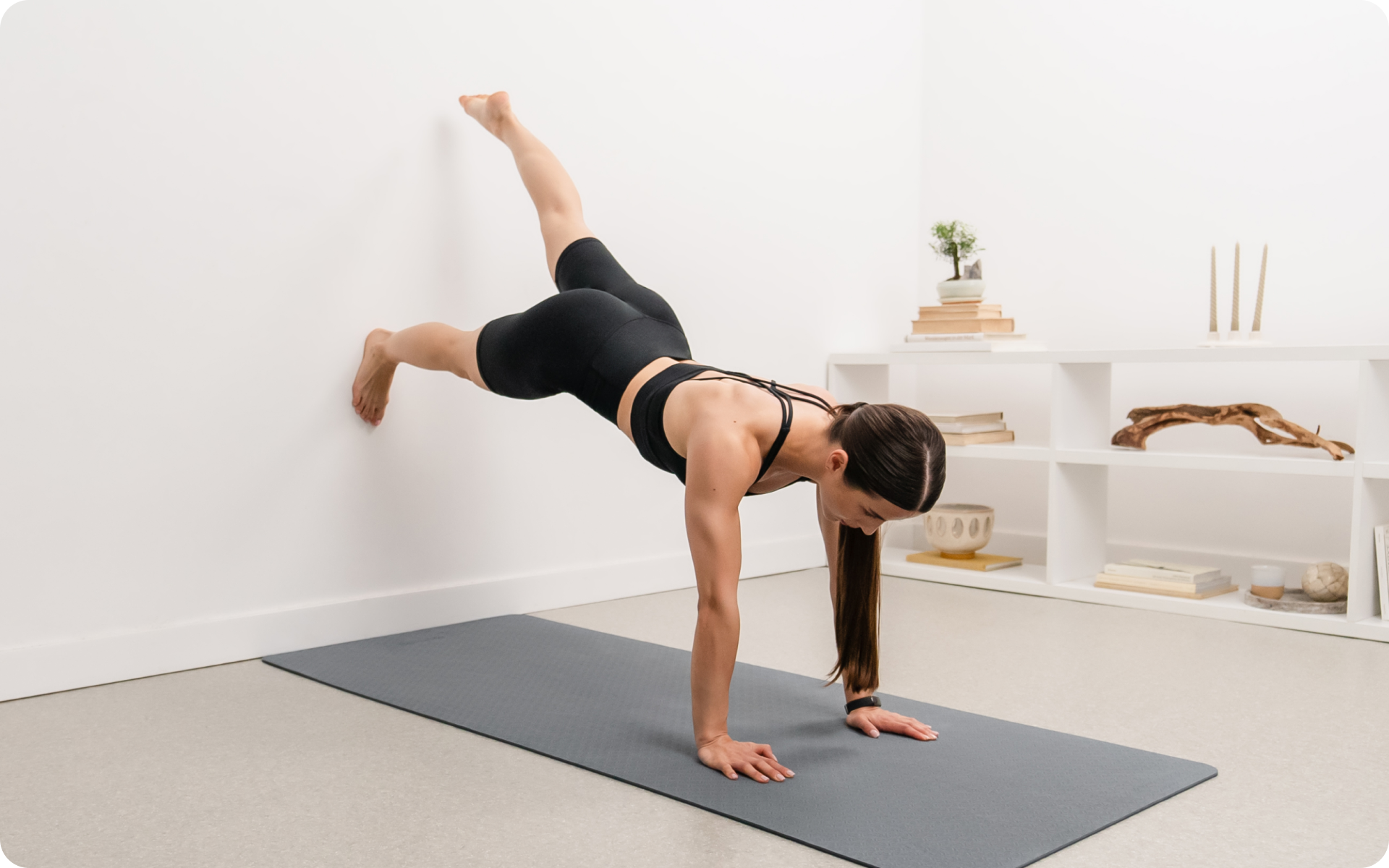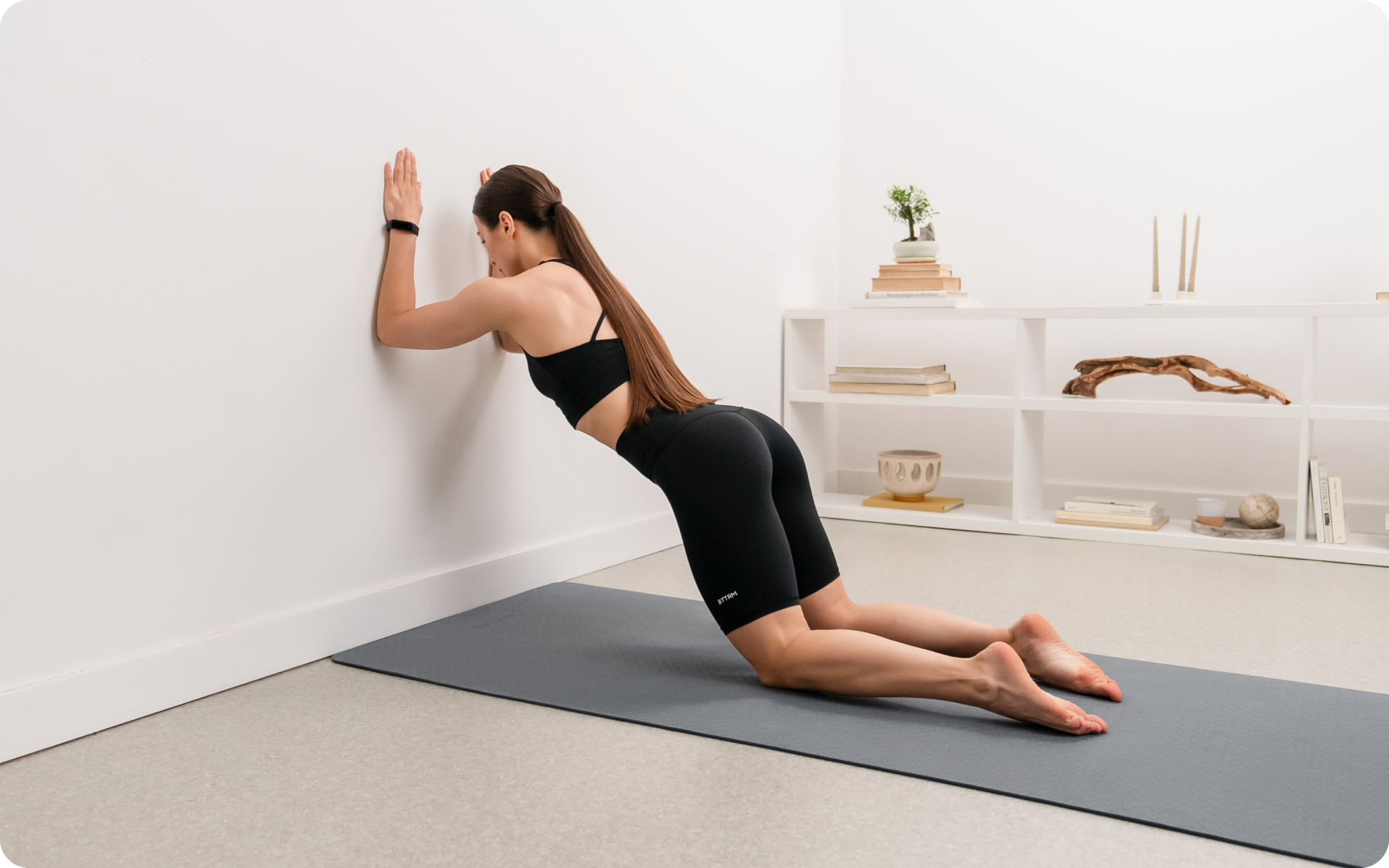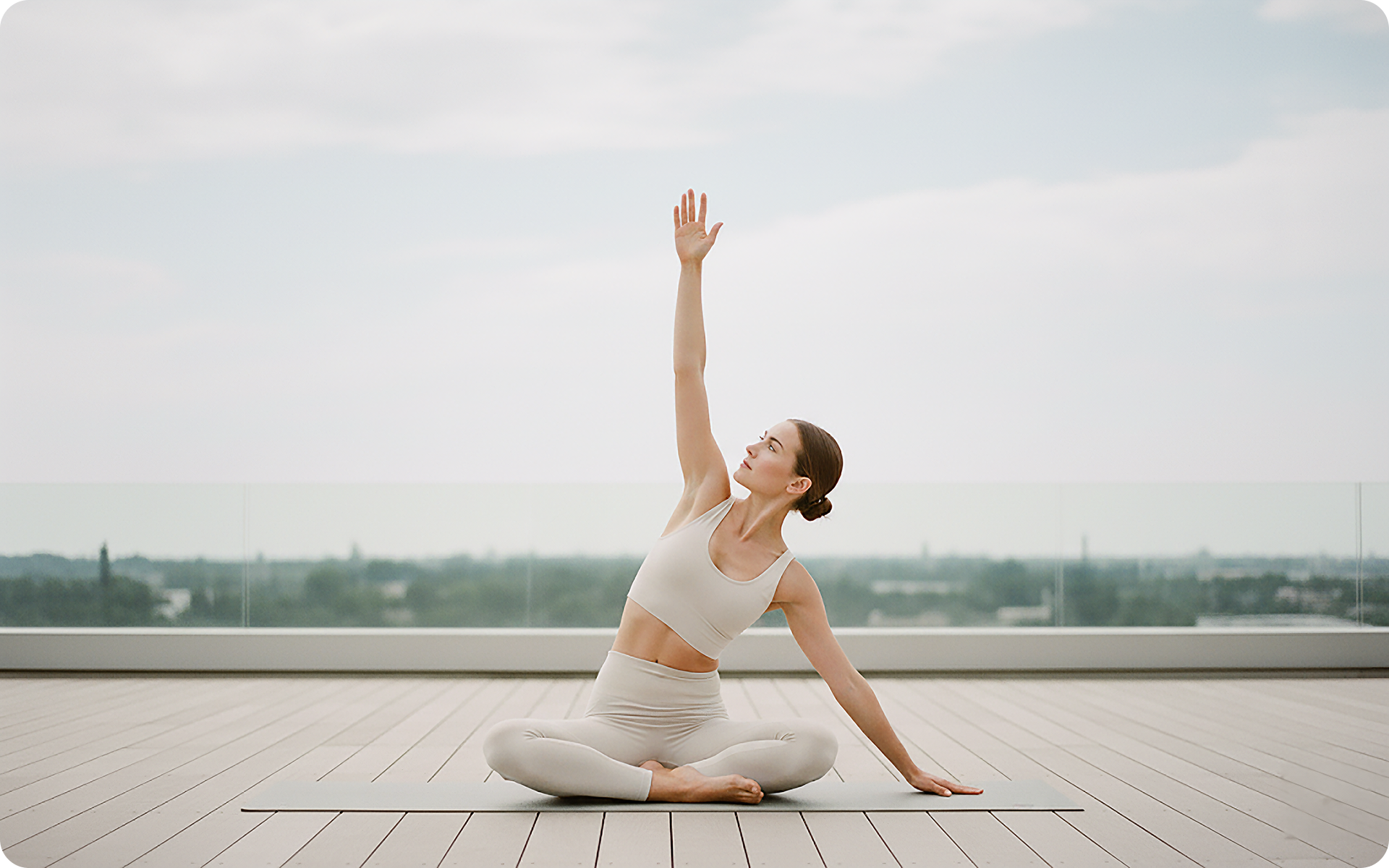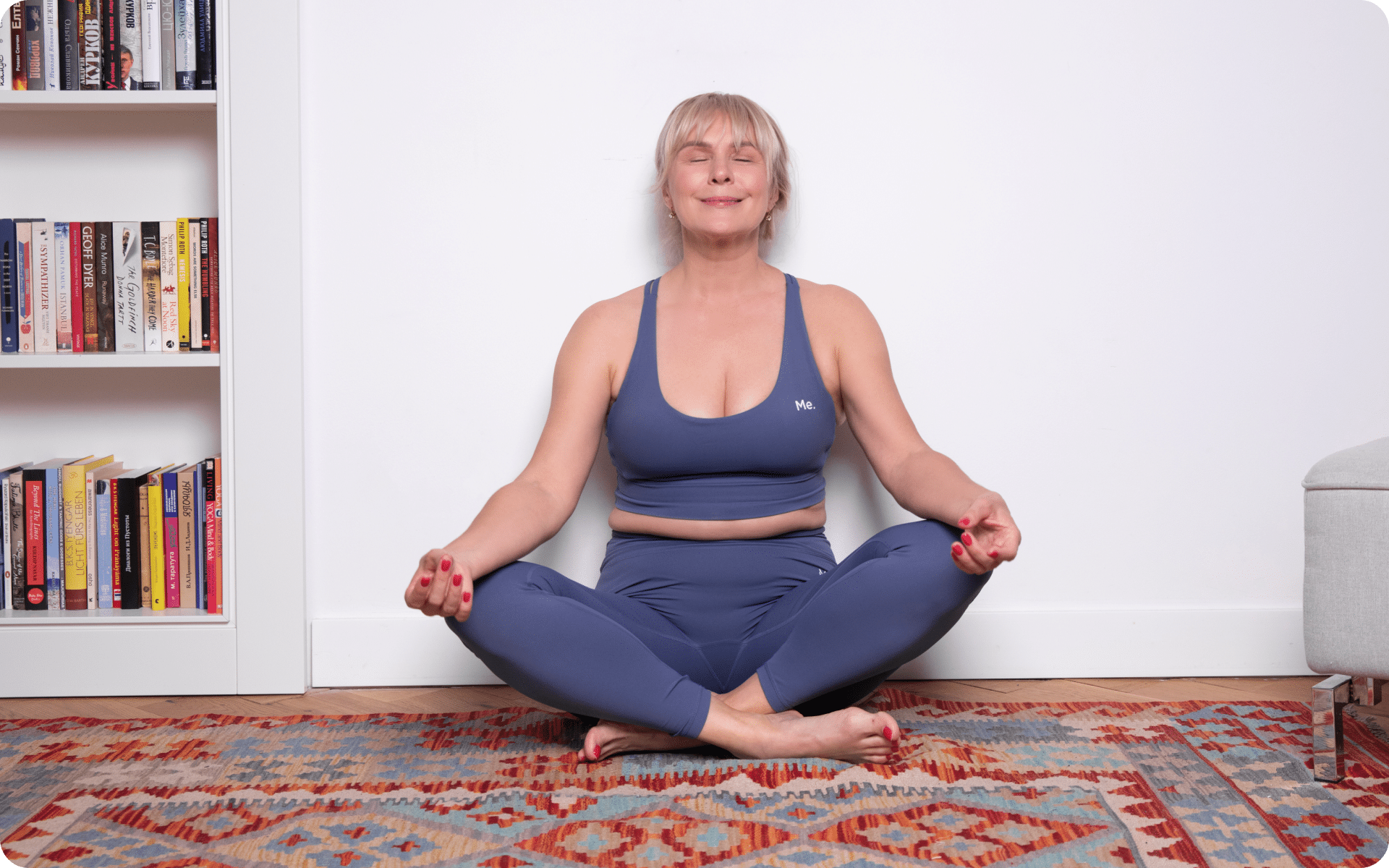Are you ready to elevate your Pilates practice beyond the basics? Advanced wall Pilates combines the traditional principles of Joseph Pilates’ method with challenging movements that will test your strength, coordination, and mind-body connection.
These five advanced exercises harness the wall’s support to create unique resistance patterns and stability challenges. Each movement demands precise control, enhanced core strength, and refined technique that separates advanced practitioners from beginners.
Whether you’re a seasoned Pilates enthusiast or an athlete who is looking to cross-train, these moves will push your limits while maintaining the foundational principles of proper alignment and controlled movement.
How Many Levels of Pilates Are There?
Joseph Pilates, the creator of the Pilates method, did not establish formal level classifications in his original works. His seminal book Return to Life Through Contrology presents the 34 classical mat exercises in a progressive sequence, but without explicit beginner, intermediate, or advanced labels.
Modern Classification Systems
Contemporary Pilates instruction typically uses a three-tier system based on movement complexity and physical demands:
Beginner Level focuses on fundamental movement patterns and basic core activation. Students learn proper breathing techniques and basic spinal articulation.
Intermediate Level introduces more complex coordination challenges and increased strength requirements. Movements start to flow together with greater precision demands.
Advanced Level requires mastery of foundational principles combined with exceptional strength, flexibility, and control. These exercises challenge multiple body systems simultaneously.
This classification system helps instructors safely progress students while honoring Pilates’ original intent of systematic movement education.
BetterMe: Health Coaching app helps you achieve your body goals with ease and efficiency by helping to choose proper meal plans and effective workouts. Start using our app and you will see good results in a short time.
What Is Considered Advanced Pilates?
Advanced Pilates transcends simple exercise difficulty. It represents mastery of the method’s core principles applied to complex movement patterns.
Characteristics of Advanced Practice
Precise Control Under Load defines advanced Pilates. You maintain perfect form while managing increased resistance, longer holds, or complex coordination patterns.
Multi-Planar Movement Integration challenges your body to work in multiple directions simultaneously. Advanced exercises often combine sagittal, frontal, and transverse plane movements.
Enhanced Mind-Body Connection becomes essential. You must maintain awareness of breath, alignment, and muscle activation while executing challenging movements.
Biomechanical Complexity
Advanced movements typically involve:
- Unstable bases of support
- Extended lever arms, which increases torque demands
- Rapid direction changes that require reactive stability
- Asymmetrical loading patterns
- Combined strength and flexibility requirements
These characteristics explain why advanced wall Pilates exercises feel significantly more challenging than their foundational counterparts.
Read more: Wall Stands Workout: 8 Moves to Prepare You for a Handstand
Is Advanced Pilates Hard?
The difficulty of advanced Pilates is largely dependent on your preparation and approach. While these exercises present genuine physical and cognitive challenges, proper progression makes them achievable.
- Perceived vs. Actual Difficulty
Perceived difficulty often stems from unfamiliarity with movement patterns rather than pure strength demands. Your nervous system requires time to coordinate new motor patterns efficiently (1).
Actual difficulty relates to the genuine strength, flexibility, and control requirements. Advanced wall Pilates exercises typically demand 75-85% of your maximum effort across multiple muscle groups simultaneously (2).
- Factors That Affect Difficulty
Your experience with foundational Pilates principles significantly impacts how challenging advanced moves feel. Proper breathing technique, core activation patterns, and spinal articulation form the foundation for advanced success.
Previous movement experience from dance, gymnastics, or martial arts can accelerate your progression. These disciplines develop similar coordination and body awareness skills.
Current strength levels, particularly in your core and stabilizing muscles, directly influence your ability to maintain proper form during challenging movements.
For more foundational movements, explore our comprehensive wall Pilates program that is designed to build these essential skills.
What Are Some Advanced Wall Pilates Exercises?
These five exercises represent the pinnacle of wall Pilates practice. Each movement combines multiple Pilates principles while challenging your strength, coordination, and control.
1. Wall Handstand Push-Up
This exercise challenges your entire kinetic chain while inverting your typical movement patterns. The biomechanical complexity comes from maintaining spinal alignment against gravity’s reversed pull while generating force through your arms.
Why It’s Advanced: Your core must work overtime to prevent spinal extension while your shoulders handle a significant load in an overhead position. The inverted orientation challenges your vestibular system and spatial awareness.
Steps to Perform:
- Face away from the wall in a push-up position with your feet elevated against the wall
- Walk your feet up the wall while walking your hands closer to the wall base
- Achieve a handstand position with hands 6-8 inches from the wall
- Lower your head toward the floor by bending your elbows
- Press back to the starting handstand position
- Perform 3-5 controlled repetitions
2. Wall Side Plank with Leg Lifts
This movement combines anti-lateral flexion core strength with dynamic hip stability. The wall provides feedback for proper alignment while challenging your ability to maintain position during limb movement.
Why It’s Advanced: Your core must resist rotation and lateral flexion while your standing leg manages shifting weight distribution. The dynamic leg movement creates constantly changing stability demands.
Steps to Perform:
- Stand an arm’s length from the wall in a side plank position
- Place your forearm against the wall for support
- Stack your feet and maintain a straight line from your head to your heels
- Lift your top leg 12-15 inches while maintaining perfect alignment
- Lower with control and repeat
- Complete 8-10 repetitions before switching sides
3. Wall Pike with Single-Leg Extension
This exercise demands exceptional hamstring flexibility combined with core strength and single-leg balance. The pike position challenges your posterior chain while the single-leg component adds instability.
Why It’s Advanced: You must maintain a deep forward fold while controlling leg movement and preventing rotation. The hamstring flexibility requirements exceed those of most standard Pilates exercises.
Steps to Perform:
- Stand facing the wall with your hands placed shoulder-width apart
- Walk your feet back until you’re in an inverted V position
- Slowly lift one leg behind you, maintaining the pike position
- Hold for 3-5 seconds while keeping your hips square
- Lower with control and alternate legs
- Complete 6-8 repetitions per leg
4. Wall Teaser Hold with Arm Reaches
The traditional teaser ranks among the most challenging classical Pilates exercises. Adding wall support and arm reaches creates new stability demands while maintaining the core challenge of the exercise.
Why It’s Advanced: Your deep abdominal muscles must maintain hip flexion against gravity while your arms create additional instability. The sustained hold requires significant muscular endurance.
Steps to Perform:
- Sit with your back against the wall and your legs extended at a 45-degree angle
- Roll your spine away from the wall into a V-sit position
- Extend your arms forward, parallel to your legs
- Alternate reaching each arm overhead while maintaining the V-sit
- Hold the position for 30-45 seconds
- Perform 2-3 sets with 30-second rest periods
Reasons why BetterMe is a safe bet: a wide range of calorie-blasting workouts, finger-licking recipes, 24/7 support, challenges that’ll keep you on your best game, and that just scratches the surface! Start using our app and watch the magic happen.
5. Wall Russian Twist with Feet Elevated
This exercise amplifies the traditional Russian twist by removing ground contact for your feet. The wall provides back support while your legs create a pendulum effect that challenges rotational control.
Why It’s Advanced: Your core must manage rotation while preventing extension, all while your legs create momentum that wants to pull you off balance. The combination tests both strength and coordination.
Steps to Perform:
- Sit with your back against the wall and your knees bent at 90 degrees
- Lift your feet off the ground, maintaining the 90-degree knee angle
- Lean slightly back while keeping contact with the wall
- Rotate your torso left and right in a controlled manner
- Keep your feet hovering throughout the movement
- Complete 15-20 rotations per side
Discover additional challenging movements in our collection of wall Pilates moves to continue progressing your practice.
Read more: Wall Pilates Swan: A Complete How-To Guide for Beginners
How Many Calories Does Advanced Pilates Burn?
Advanced Pilates exercises typically burn 5-8 calories per minute, depending on your body weight, exercise intensity, and movement complexity (3). However, calorie burn shouldn’t be your primary focus when you’re practicing advanced wall Pilates.
- Energy Expenditure Factors
Exercise Intensity significantly impacts calorie burn (4). Advanced movements that require sustained muscle contractions and complex coordination patterns demand more energy than basic exercises.
Muscle Mass Activation affects metabolic demand (5). Advanced wall Pilates exercises engage multiple large muscle groups simultaneously, which increases overall energy expenditure.
Movement Complexity requires additional neural energy (6). Your brain burns glucose to coordinate complex movement patterns, which contributes to total energy expenditure.
- Limitations of Calorie Estimates
Accurate calorie measurement during Pilates remains challenging. Most fitness trackers inaccurately estimate energy expenditure for resistance-based exercises compared to cardiovascular activities. Generally, these fitness trackers use a formula to give you a specific calorie burn number based on the individual exercise selection, body measurements, and varying heart rate.
In addition, individual variations in metabolism, body composition, and movement efficiency create significant differences in actual calorie burn between practitioners who are performing identical exercises. This is why these trackers aren’t necessarily that accurate in terms of calories burned.
The true value of advanced Pilates lies in strength development, movement quality improvement, and enhanced body awareness rather than pure calorie expenditure.
However, we wish to reiterate that just because this form of exercise doesn’t burn a significant amount of calories doesn’t mean that it can’t be used as a part of a fat loss plan. The relationship between calories in and calories out is the most important factor for fat loss. Wall Pilates burns calories and as long as you’re burning more calories than you consume, you’ll see fat loss.
How Long Does It Take to Become Advanced in Pilates?
Reaching advanced proficiency in Pilates typically requires 2-4 years of consistent practice, assuming you do 3-4 sessions per week. However, individual progression varies significantly based on multiple factors.
Factors That Affect the Progression Timeline
Previous Movement Experience accelerates learning. Athletes, dancers, or those with gymnastics backgrounds often progress faster due to existing body awareness and strength foundations.
Practice Frequency directly correlates with advancement speed. Practicing 3-4 times weekly yields faster results than sporadic sessions due to improved motor learning and strength adaptation.
Quality of Instruction significantly impacts progression. Working with a certified instructor who understands biomechanics and proper progression will ensure safe, efficient advancement.
Realistic Expectations
Months 1-6: Master fundamental principles, including breathing, core activation, and basic movement patterns. Build foundational strength and flexibility.
Months 6-18: Develop intermediate skills with improved coordination and strength. Begin tackling more complex exercises with proper form.
Months 18-36: Transition to advanced exercises as strength, flexibility, and control reach necessary levels. Refine technique and explore challenging variations.
Months 37+: Achieve mastery of advanced techniques while continuing to increase your understanding of subtle movement nuances.
Remember that advancement isn’t just about performing difficult exercises, it’s about embodying Pilates principles in increasingly sophisticated ways.
How Do You Progress to Advanced Wall Pilates?
Advancing your wall Pilates practice requires systematic progression through strength building, technique refinement, and gradual complexity increases. Evidence-based progression principles ensure safe, sustainable advancement.
Build Progressive Strength
Systematic Overload forms the foundation of strength progression (7). Gradually increase the exercise duration, repetitions, or range of motion every 2-3 weeks to continuously challenge your muscles.
Core Integration must develop before you attempt advanced exercises. Practice maintaining a neutral spine while moving your limbs independently. This skill underlies all advanced Pilates movements.
Proprioceptive Training enhances your body’s position sense. Practice exercises with eyes closed or on unstable surfaces to improve the neuromuscular control required for advanced movements.
Master Technique Fundamentals
Breathing Coordination becomes increasingly important as exercises grow more complex. Practice lateral thoracic breathing while maintaining abdominal engagement during simple movements before progressing.
Spinal Articulation must become second nature. Perfect your ability to move through your spine vertebra by vertebra during roll-ups and roll-downs before attempting advanced variations.
Shoulder Stability requires specific attention. Develop the ability to maintain scapular organization while moving your arms through various ranges of motion.
Gradual Complexity Introduction
Single-Variable Progression prevents your nervous system from becoming overwhelmed. Change only one aspect of an exercise at a time – either range of motion, duration, or coordination complexity.
Preparation Exercises should precede advanced movements. Practice components of complex exercises separately before you combine them into full movements.
Recovery Integration becomes essential as the intensity increases. Allow 48-72 hours between intense sessions to permit neuromuscular adaptation and prevent overuse injuries.
For a structured approach to building these skills, consider following a comprehensive wall Pilates plan that systematically develops the prerequisites for advanced practice.
Classical Pilates mat work represents the most challenging form of Pilates practice. Without equipment assistance, you’re entirely reliant on your own strength and control. Among the 34 classical exercises, the Boomerang is widely considered the most difficult, as it requires exceptional spinal mobility, core strength, and coordination. Reformer Pilates with spring resistance typically burns the most calories, averaging 300-400 calories per hour for a 150-pound person (8). The continuous resistance and flowing movements create sustained muscle engagement. However, advanced mat work and wall Pilates can approach similar energy expenditure when performed at high intensity. Pilates strengthens your entire core musculature, including the deep transverse abdominis that acts like a natural corset. While no form of exercise will spot-reduce belly fat, consistent Pilates practice improves posture and core strength, which creates a flatter appearance. The strengthened core also supports better breathing patterns and spinal alignment. No single exercise specifically burns belly fat. Fat loss occurs systemically through creating a caloric deficit via diet and exercise. High-intensity interval training (HIIT) and compound strength exercises burn the most calories overall. Pilates contributes by building muscle mass, which increases your metabolic rate and supports long-term fat loss.Frequently Asked Questions
What is the hardest kind of Pilates?
What type of Pilates burns the most calories?
Does Pilates flatten your stomach?
What exercise burns the most belly fat?
The Bottom Line
Advanced wall Pilates represents the culmination of years of dedicated practice and progressive skill development. These five exercises challenge every aspect of your physical and mental capabilities while honoring the fundamental principles Joseph Pilates established almost a century ago.
Remember that advancement isn’t about rushing to the most difficult exercises. True progress comes from deepening your understanding of movement principles and applying them with increasing sophistication. Each repetition should demonstrate greater awareness, control, and integration than the last.
The wall becomes more than just a prop in these exercises – it’s a partner that provides feedback, support, and challenge in equal measure. If you master these movements, you’ll develop strength, flexibility, and body awareness that extends far beyond your Pilates practice.
DISCLAIMER:
This article is intended for general informational purposes only and does not serve to address individual circumstances. It is not a substitute for professional advice or help and should not be relied on for making any kind of decision-making. Any action taken as a direct or indirect result of the information in this article is entirely at your own risk and is your sole responsibility.
BetterMe, its content staff, and its medical advisors accept no responsibility for inaccuracies, errors, misstatements, inconsistencies, or omissions and specifically disclaim any liability, loss or risk, personal, professional or otherwise, which may be incurred as a consequence, directly or indirectly, of the use and/or application of any content.
You should always seek the advice of your physician or other qualified health provider with any questions you may have regarding a medical condition or your specific situation. Never disregard professional medical advice or delay seeking it because of BetterMe content. If you suspect or think you may have a medical emergency, call your doctor.
SOURCES:
- Neural Correlates of Motor Skill Learning Are Dependent on Both Age and Task Difficulty (2021, frontiersin.org)
- Comparisons of functional movements and core muscle activity in women according to Pilates proficiency (2024, frontiersin.org)
- The Energy Cost of a Basic, Intermediate, and Advanced Pilates’ Mat Workout (2004, journals.lww.com)
- Energy Expenditure, Intensity, and Perceived Effort in Recreational Functional Training (2024, pubmed.ncbi.nlm.nih.gov)
- Metabolic Cost of Activation and Mechanical Efficiency of Mouse Soleus Muscle Fiber Bundles During Repetitive Concentric and Eccentric Contractions (2019, frontiersin.org)
- Forward to Bernstein: Movement Complexity as a New Frontier (2020, frontiersin.org)
- Effects of Resistance Training Overload Progression Protocols on Strength and Muscle Mass (2024, pubmed.ncbi.nlm.nih.gov)
- Pilates Calorie Calculator (2025, piilatescalculator.com)
